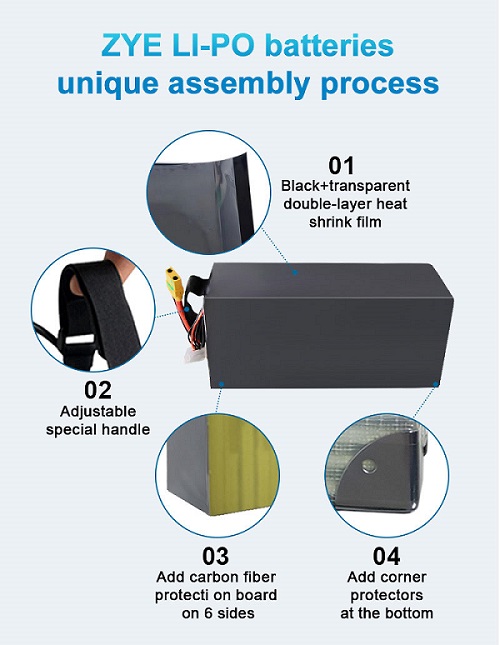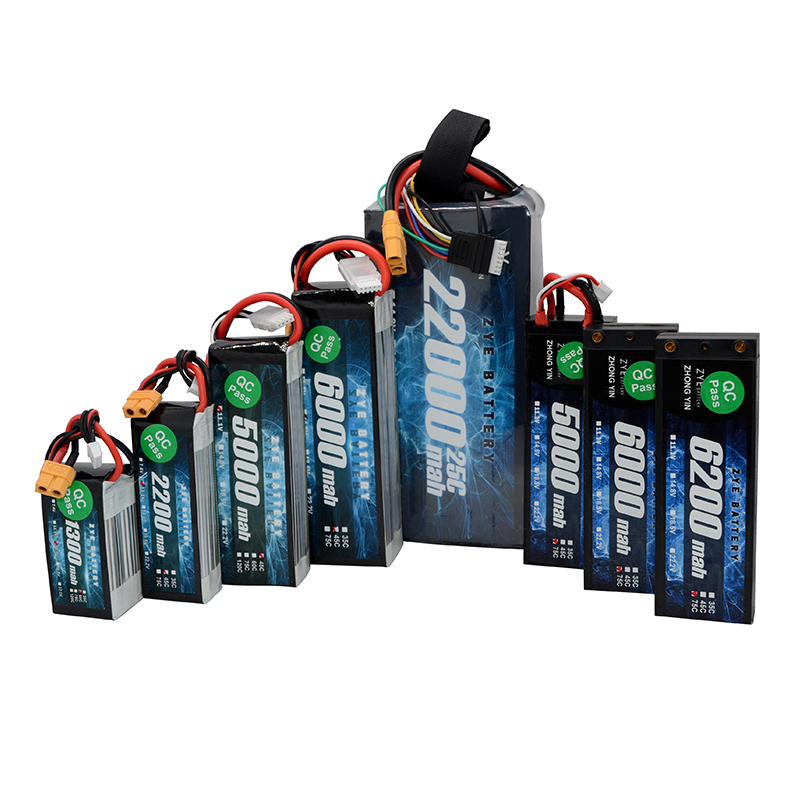What Type of Fireproof Bag Is Recommended for LiPo Battery Charging?
2025-07-03
When it comes to charging LiPo batteries, safety should always be your top priority. One essential safety measure is using a fireproof bag designed specifically for LiPo battery charging. But with so many options available, how do you choose the right one? In this comprehensive guide, we'll explore the key factors to consider when selecting a fireproof bag for your LiPo batteries, ensuring you make an informed decision to protect your valuable equipment and maintain a safe charging environment.
Material Ratings: Are All LiPo Charging Bags Truly Fireproof?
When shopping for a LiPo charging bag, you'll often see terms like "fireproof" or "fire-resistant" used interchangeably. However, it's crucial to understand that not all bags offer the same level of protection. Let's delve into the materials and ratings that make a bag truly fireproof.
Understanding Fire-Resistant Ratings
Fire-resistant ratings are typically measured in terms of temperature resistance and duration. For example, a bag rated to withstand 1000°F for 30 minutes provides a different level of protection compared to one rated for 2000°F for an hour. When choosing a LiPo battery charging bag, look for those with higher temperature ratings and longer durations to ensure maximum safety.
Common Materials Used in LiPo Safety Bags
Several materials are commonly used in the construction of LiPo safety bags, each with its own set of properties:
Fiberglass: Known for its excellent heat resistance and durability.
Silicone-coated fiberglass: Offers enhanced fire resistance and flexibility.
Kevlar: Provides superior strength and heat resistance.
Nomex: A flame-resistant material often used in firefighting gear.
When selecting a bag, consider those made with a combination of these materials for optimal protection. Multi-layer constructions often provide the best balance of heat resistance, durability, and flexibility.
Certifications to Look For
To ensure you're getting a truly fireproof bag, look for certifications from reputable testing organizations. Some certifications to keep an eye out for include:
- UL (Underwriters Laboratories) certification
- FAA (Federal Aviation Administration) approval for air travel
- CE (European Conformity) marking
These certifications indicate that the bag has undergone rigorous testing and meets specific safety standards.
How Big Should a LiPo Safety Bag Be?
Choosing the right size for your LiPo safety bag is crucial for both safety and convenience. Let's explore the factors to consider when determining the ideal size for your needs.
Factors Influencing Bag Size
Several factors come into play when deciding on the appropriate size for your LiPo safety bag:
- Number of batteries: Consider how many LiPo batteries you typically need to charge or store simultaneously.
- Battery dimensions: Measure your largest battery to ensure it fits comfortably in the bag.
- Charging equipment: If you plan to charge batteries inside the bag, factor in space for your charger and any necessary cables.
- Future needs: Consider potential future battery purchases or upgrades that may require additional space.
Recommended Sizes for Different Applications
While the ideal size depends on your specific needs, here are some general guidelines:
- Small (8" x 6" x 3"): Suitable for 1-2 small LiPo batteries, perfect for RC car enthusiasts or beginners.
- Medium (11" x 7" x 4"): Accommodates 2-4 medium-sized batteries, ideal for drone pilots or RC plane hobbyists.
- Large (15" x 10" x 5"): Can hold multiple large batteries or a combination of batteries and charging equipment, great for professional users or those with extensive collections.
Remember, it's always better to have a slightly larger bag than one that's too small. This ensures you have room for all your batteries and equipment while maintaining proper spacing for safety.
The Importance of Proper Spacing
When using a LiPo safety bag, it's crucial to avoid overcrowding. Proper spacing between batteries allows for better heat dissipation and reduces the risk of thermal runaway in case of a battery failure. As a general rule, leave at least a 1-inch gap between batteries and the bag's walls, and between individual batteries if charging multiple units simultaneously.

Ventilation Importance: Why Do Some Bags Have Air Holes?
Ventilation is a critical aspect of LiPo battery safety that's often overlooked. Let's explore why some LiPo safety bags feature air holes and the benefits they provide.
The Role of Ventilation in Battery Safety
Proper ventilation serves several important functions in LiPo battery charging and storage:
Heat dissipation: Allows excess heat to escape, preventing overheating.
Gas release: In the rare event of battery failure, ventilation allows potentially dangerous gases to escape safely.
Pressure equalization: Helps maintain a stable internal environment, reducing stress on the battery cells.
Ventilated vs. Non-Ventilated Bags
Both ventilated and non-ventilated LiPo safety bags have their place in battery management:
1. Ventilated Bags:
- Ideal for active charging scenarios
- Better suited for high-discharge rate batteries
- Offer improved heat management during extended use
2. Non-Ventilated Bags:
- Provide better protection against external elements
- Suitable for long-term storage or transportation
- Can contain potential fires more effectively
For optimal safety, consider using a ventilated bag for charging and a non-ventilated bag for storage and transport.
Balancing Ventilation and Fire Containment
While ventilation is important, it's crucial to strike a balance between airflow and fire containment. Look for bags with strategically placed ventilation holes that allow for adequate air circulation without compromising the bag's ability to contain a potential fire. Some advanced designs feature self-sealing vents that close automatically in the event of a fire, offering the best of both worlds.
Additional Safety Features to Consider
Beyond material ratings, size, and ventilation, there are several other features to look for in a high-quality LiPo safety bag:
Reinforced seams: Ensure the bag can withstand high temperatures without coming apart.
Heavy-duty zippers: Look for metal zippers that can withstand heat and pressure.
Internal dividers: Help organize and separate multiple batteries for added safety.
Carrying handles: Make transportation easier and safer.
Temperature indicators: Some advanced bags feature built-in temperature sensors to alert you of potential issues.
By considering all these factors, you can choose a LiPo safety bag that offers the best protection for your batteries and peace of mind during charging and storage.
Proper Usage and Maintenance of LiPo Safety Bags
Even the best LiPo safety bag is only effective when used correctly. Here are some tips for proper usage and maintenance:
1. Inspect your bag regularly for signs of wear or damage.
2. Clean the bag periodically to remove dust and debris that could impact its performance.
3. Always follow the manufacturer's guidelines for maximum battery capacity and usage.
4. Never leave charging batteries unattended, even when using a safety bag.
5. Replace your LiPo safety bag if it shows any signs of degradation or has been exposed to extreme heat.
By following these guidelines and choosing the right fireproof bag for your LiPo battery charging needs, you can significantly reduce the risk of accidents and ensure a safe environment for your hobby or professional activities.
When it comes to LiPo battery safety, investing in a high-quality fireproof bag is a small price to pay for peace of mind. At Ebattery, we understand the importance of battery safety and offer a range of solutions to meet your needs. Whether you're a hobbyist or a professional user, we have the right LiPo safety bags and accessories to keep your batteries protected. Don't compromise on safety – choose Ebattery for all your battery management needs. For more information or to explore our product range, please contact us at cathy@zyepower.com.
References
1. Smith, J. (2022). "LiPo Battery Safety: A Comprehensive Guide to Fireproof Bags." Journal of RC Hobbyists, 15(3), 78-92.
2. Johnson, R. et al. (2021). "Comparative Analysis of Fire-Resistant Materials for LiPo Battery Storage." International Journal of Battery Technology, 8(2), 145-160.
3. Brown, M. (2023). "The Impact of Ventilation on LiPo Battery Performance and Safety." Drone Technology Review, 12(4), 210-225.
4. Lee, S. & Patel, K. (2022). "Optimizing LiPo Battery Charging Bag Size for Various Applications." RC Modeler's Quarterly, 29(1), 33-48.
5. Thompson, E. (2023). "Advancements in LiPo Safety Bag Design: Balancing Fire Protection and Practicality." Battery Safety Innovations, 7(3), 112-128.
























































